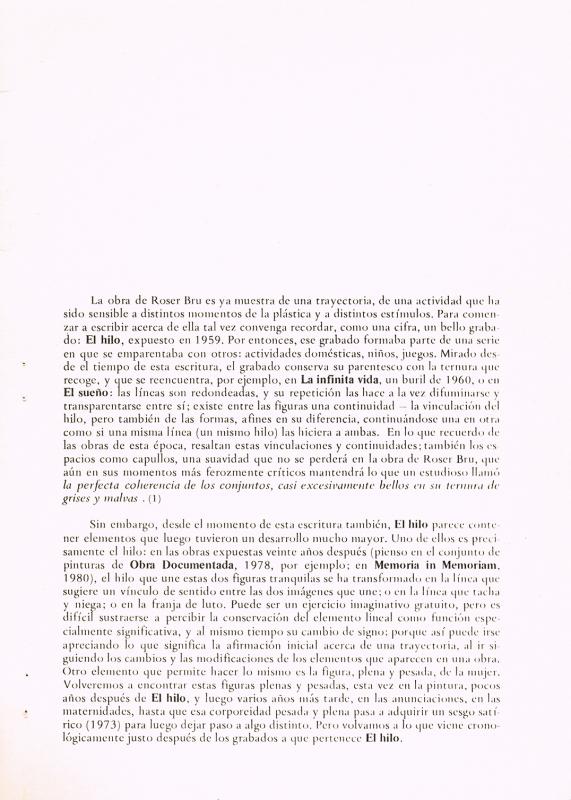"Los ojos enterrados," an essay by Adriana Valdés (b. 1943), borrows its title from the final novel in the trilogy by Miguel Ángel Asturias (1899–1974), the Guatemalan writer and diplomat. Valdés wrote the essay for Kafka y nosotros, the exhibition of works by Roser Bru (b. 1923), the Spanish painter from Catalonia who settled in Chile when she was sixteen years old, at the end of the Spanish Civil War. She had a long and successful career in the visual arts and was awarded the Premio Nacional de Artes Plásticas (2015), the highest honor bestowed by the Chilean government for artistic achievement.
The catalogue for Kafka y nosotros (1977) also included a text by the writer Enrique Lihn (1929–1988) [See the following in the ICAA Digital Archive: “Auschwitz” (doc. no. 740329).] The event took place at the Cromo gallery, managed by Nelly Richard at the time. This catalogue and the exhibition it celebrated coincided with a highly productive period in visual art that saw the felicitous overlap of art exhibitions and the publication of written works about those events.
Valdés has written extensively about Bru’s work over the years [See “Adriana Valdés: Roser Bru” (doc. no. 747917).] Valdés claims that the artist’s body of work can be divided into two phases: an initial period from 1960 to 1973, which she calls “Materias,” and a second, from 1973 to 1988, which she calls “Desmaterializaciones.” During the first period she acknowledges that her painting was influenced by the Catalonian artist Antoni Tàpies (1923–2012); at that time she was rendering large-scale versions of the human body with simple lines. The second period consisted of her response to life under the military dictatorship imposed by Augusto Pinochet (1973–90), when Bru used photographs, documents, and traces and marks of various kinds to create veiled presences. Her work, in general, focused on memory, with a nod to art history (Velásquez, mainly); portraits of different people in the cultural world; and, in particular, recurring references to bread and watermelon, which she identifies with women and fertility.

